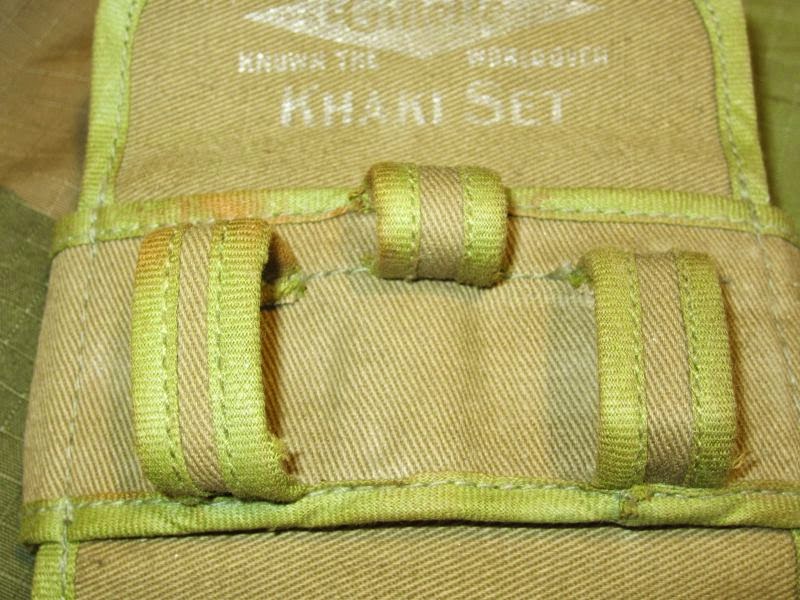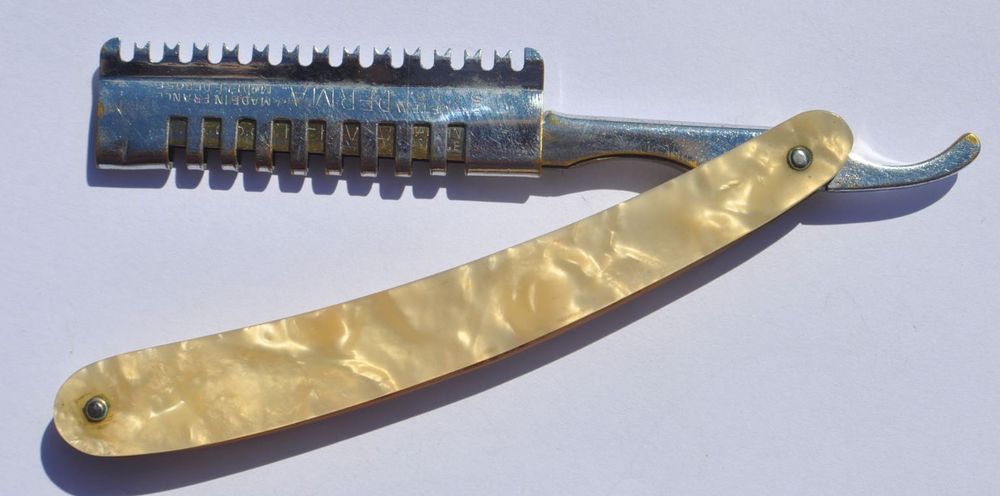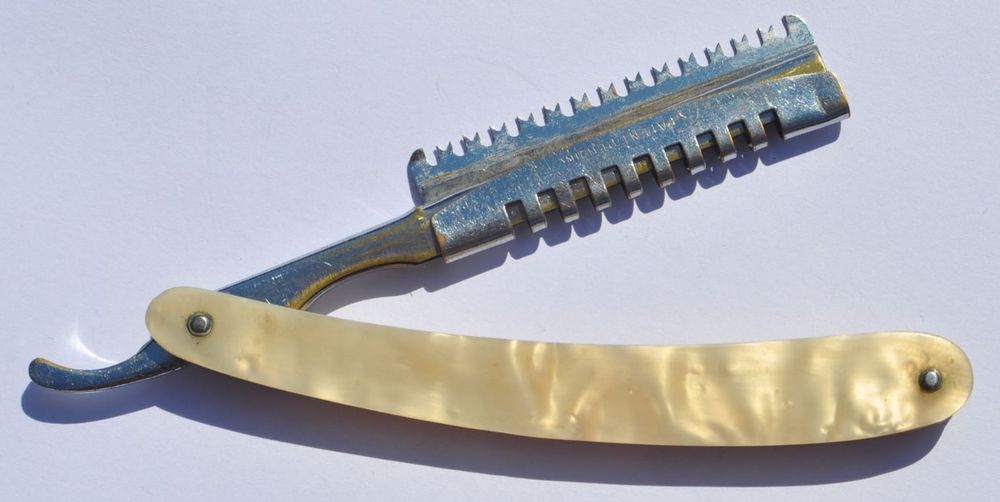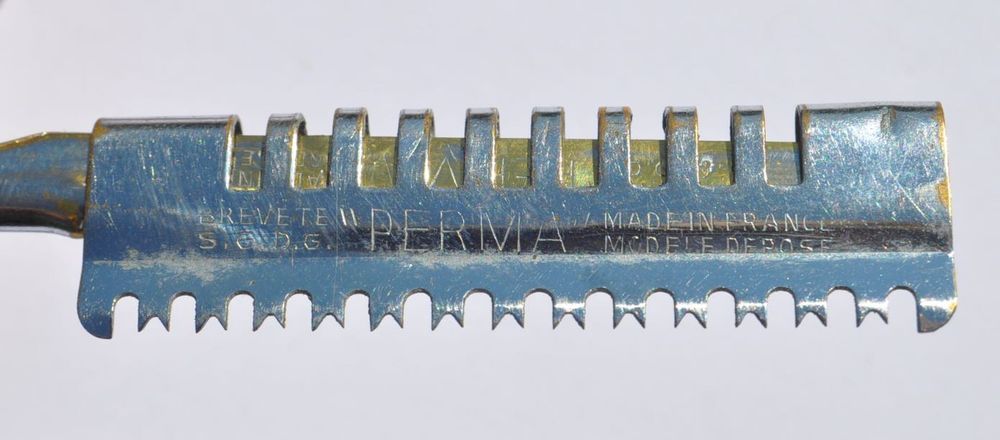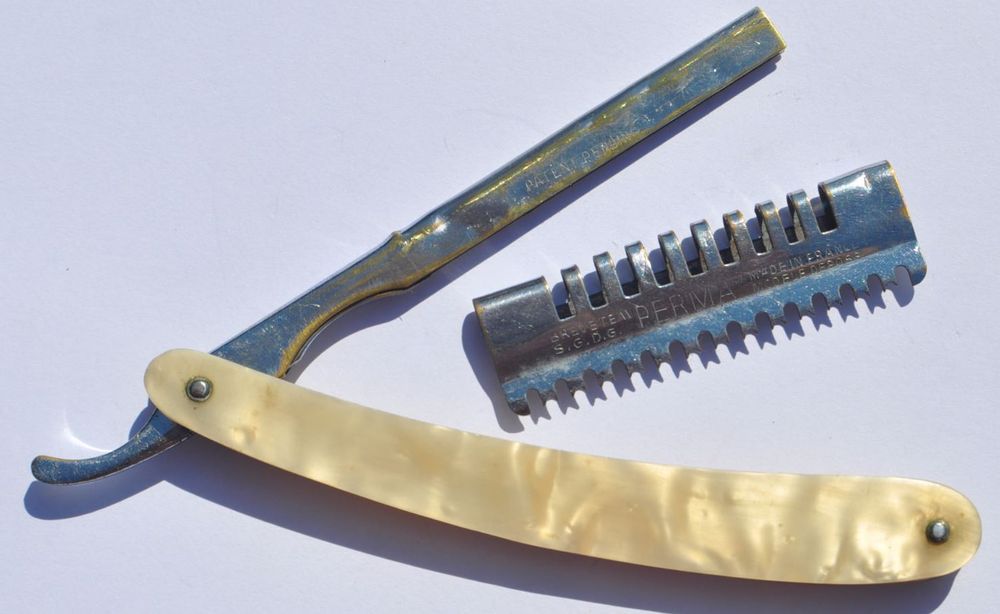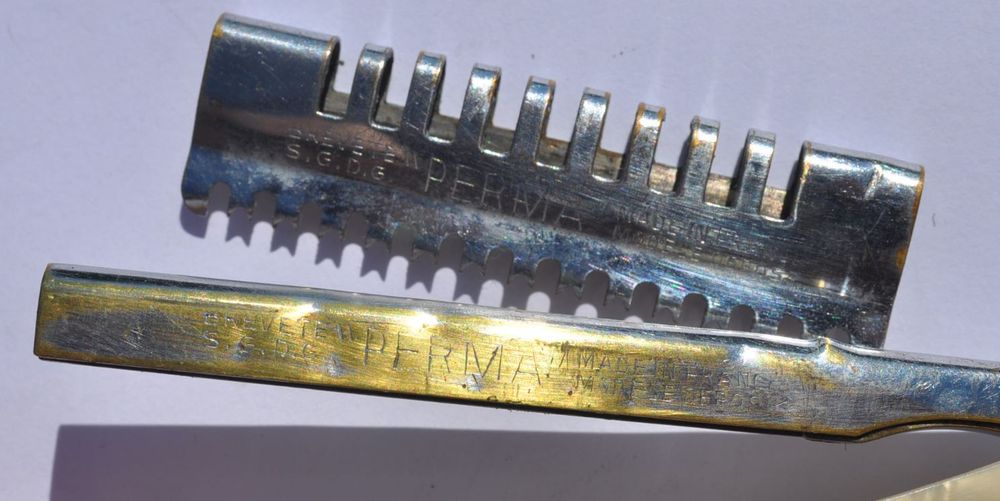Introducing my latest razor; a Gillette Khaki Set from WW1 – aka the Great War, the War to End All Wars (that sentiment didn’t pan out). Thanks to a fellow from my favourite shave forum, this 96 year old soldier will once again return to active duty – although this time it will hopefully just be for various exercises and when I’m on the Go, and not the muds of Flanders.
The serial number under the guard is a crisp J4173, which according to my source places it as an reasonable early production military razor, manufactured in 1918. Another source claims that the single button closure is a rare variant; perhaps experience proved that a two button closure was more stable.
There is a minor crack in the handle – but from what I can tell online that is both common, repairable and not influencing the shave with these old, classic Gilletter. The mirror has gone AWOL at some point in the life of this old soldier, but my GoBag already have a small, unbreakable mirror in it so I’ll manage (unless someone has a spare khaki-set mirror they need to get rid off…). The blade holder should fit one or two modern blades on the diagonal, so I’m set in that regards provided I remember to refill. The fabric and seams are in surprisingly good condition considering the age of this set – the only thing worn is the print on the inside of the flap.
I’ve yet to shave with this baby, but when I do I’ll be sure to share my impressions.
Like this:
Like Loading...



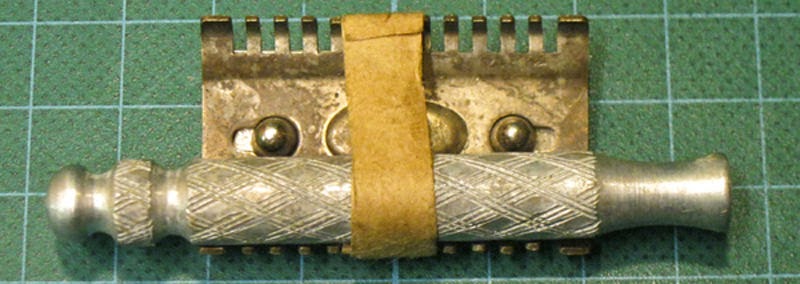

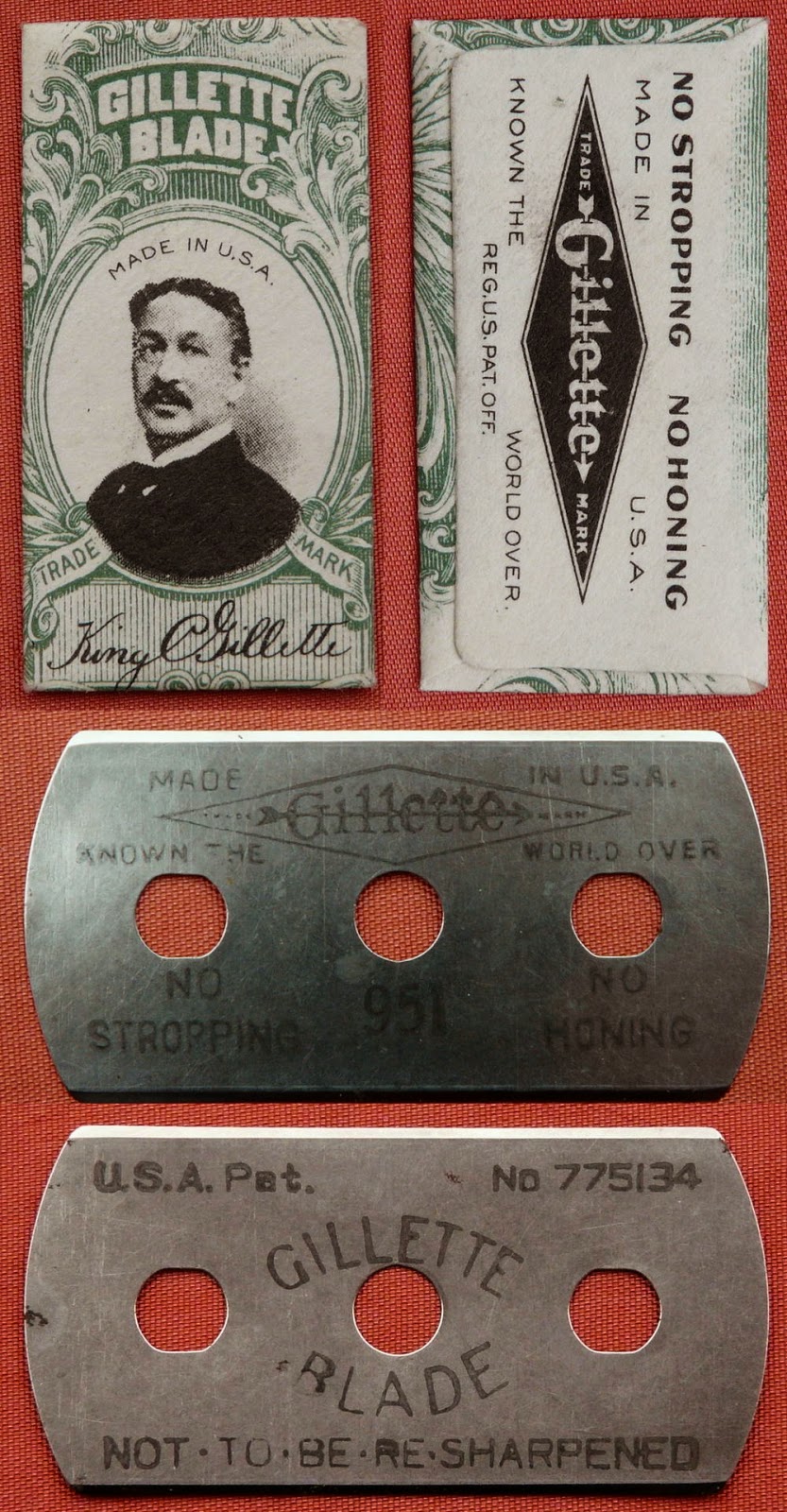%2BGillette%2BBlade.jpg)






